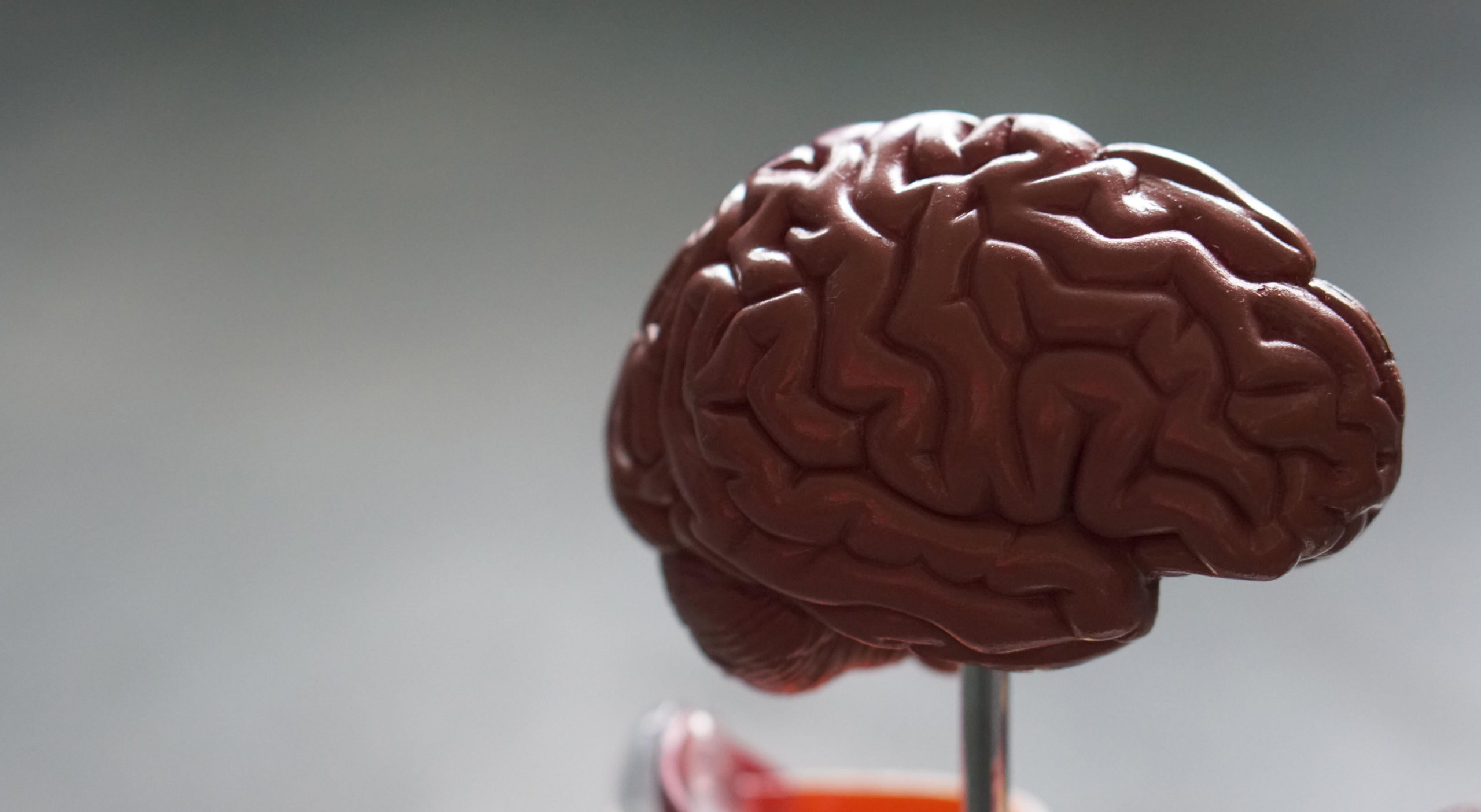SPECIALIZED BRAIN IMAGING USED TO EXAMINE ROLE OF NEUROTRANSMITTERS ROLE IN ALZHEIMER’S DISEASE
Dr. Clifford Cassidy is an assistant professor in the faculty of medicine at the University of Ottawa in addition to being a scientist at the Royal’s Institute of Mental Health Research. He’s interested in neuroimaging methods to understand brain mechanisms of psychopathology, which broadly refers to the study of mental disorders.
The Fulcrum sat down with Dr. Cassidy to discuss his 2022 study, recently published in Neuropsychopharmacology in more detail.
What are neurotransmitters?
“There are different neurotransmitters in the brain,” explained Dr. Cassidy. “Some particularly relevant neurotransmitters are called neuromodulators that have a big effect on people’s mood, and emotions and level of arousal. Often people hear about dopamine, which I’ve done a lot of work with and others may have heard of serotonin. In this case, we’re looking at norepinephrine, or sometimes called noradrenaline.”
Norepinephrine is one of the most important neuromodulators in the brain, having a big effect on people’s levels of arousal. Consider two different situations: one where you are asleep, and in the other, you are being attacked. During either of those two scenarios, there’s a wide range of how excited you might be, and neuromodulators affect that. They also play an important role in learning and memory, because that’s also related to how attentive and aroused you are.
What is the locus coeruleus (LC)?
When asked to elaborate on the locus coeruleus and its relationship with Alzheimer’s, Dr. Cassidy said, “Most of the cells that are releasing that neurotransmitter throughout the brain have their cell bodies located in this very small structure deep in the brain called the locus coeruleus (LC). We’re interested in that particular brain region because it’s where the neuromodulators are based, and then they send their projections, like big trees with very broad arbours branched all over the brain.”
Dr. Cassidy explains that the reason the LC is important in Alzheimer’s is a more complicated story, because there’s some debate and discussion about whether it’s an important part of the cascade of events that triggers Alzheimer’s.
“At this point, we kind of know what Alzheimer’s is, but we don’t know why some people get it and other people don’t get it. We know Alzheimer’s isn’t necessarily a problem with that system, but that might be part of the picture, and part one of the early changes that leads to the other cascade of changes. Now, the expression of Alzheimer’s is more about these harmful proteins you get into the brain like amyloid and tau,” said Dr. Cassidy.
“Most people think the LC is the first place in the brain that accumulates those tangles of hyperphosphorylated tau — why that is, we don’t know, and what role exactly it has in spreading it throughout the brain, which leads to Alzheimer’s eventually, we also don’t know. But it’s been seen that you could have tau in that part of your brain decades before you get Alzheimer’s,” he added.
Magnetic resonance imaging (MRI)
While studying neuroimaging Dr. Cassidy noted that the MRI machine can take many different types of images, and the difference between different types of images is seen in the contrasts in different tissues. In some images, you’ll see a good contrast between the grey matter and the white matter, or some where the grey matter is dark and white matter is bright. In others, it’s reversed depending on the type of contrast you’re looking at — so there are many different types of contrasts you can do with MRI.
“The idea of using MRI and applying it to look at neuromelanin has been around for 15 years, people are still trying to understand best how to optimize the method, and how specific it is to neuromelanin,” he said. “However, it can show you something that most MRI sequence types can’t show you because the parts of the brain we’re interested in this study is the LC. In other studies, it’s the substantia nigra, where the dopamine neurons are, and in most MRI scans, you can’t see those things at all; they just blend in with the background but when using neuromelanin MRI they are revealed.”
Research Methods
According to Dr. Cassidy, he’s been working on this method for eight years, and since its inception back during his postdoc at Columbia University, he was unsure about where it would all lead. Since he’d always been working in psychiatry, he thought even if it’s not just a marker of neurodegeneration, it could be useful for people with psychiatric illnesses where these structures aren’t degenerating.
“I started using this method for particular applications, and it was working well and I was gaining a lot of expertise. We built our own tools to study it. So it seemed pretty obvious to try to use it in as many ways as we can, and in areas [where] the greatest need is for this type of a method. I wasn’t the first person to use it in Alzheimer’s, but ours is the biggest study that I’m aware of using this method that has the most supporting data with it,” he explained.
The supporting data being not just the neuromelanin MRI (NM-MRI) mentioned above, but also the measures of PET, PET imaging of the tau and amyloid in the brain. There are also clinical measures of cognitive status and neuropsychiatric symptoms.
It’s important to note: “it would have been a big job for me to collect all that data and to have access to such a special data set like this that has close to 200 people with all those measures; it’s not something you can build overnight. My strategy for that was to collaborate with people who are already doing this work. So, this was part of an ongoing study at McGill University, and I convinced them to add this neuromelanin sequence to their existing protocol.”
Now that researchers had all the relevant measures for Alzheimer’s from people with not only the disease but also healthy and ageing individuals, they could see to what extent the LC is involved in the disease. The variety in the individuals allowed them to gain a better sense of when the changes occur and other features are associated with the illness.
Results
Since there hasn’t been a lot of work using this method in Alzheimer’s, it was important for researchers to start from the basics. It was well understood through post-mortem work that the LC degenerates.
“Firstly, we wanted to confirm that the signal is lost because the structure is degenerating in Alzheimer’s, and that it’s a progressive illness that seems to be worse in people with more advanced illness. You can quantify that very precisely with PET imaging of tau in the brain because you can see the progress of the spread of tau, which is basically the stage of Alzheimer’s you’re at using Braak staging system,” said Dr. Cassidy.
Researchers found that as people advanced in their Alzheimer’s, they were progressively losing the neurons in the LC. That correlation was pretty strong on its own, however, in terms of trying to understand the relevance of this brain system or the norepinephrine system in Alzheimer’s, they wanted to go a bit further.
While one important effect of loss of LC neurons could be on the cognitive symptoms of Alzheimer’s, there has been a lot of the attention on the role of the LC-norepinephrine system on the neuropsychiatric symptoms of Alzheimer’s. This illness isn’t just memory impairment, but can also have a whole suite of symptoms. Even in the early stages, people sometimes experience depression, anxiety, impulse control problems, socially inappropriate behaviour, or even psychotic-like symptoms. Additionally, there is prior evidence that the norepinephrine system is relevant for those types of symptoms.
He continued, “We found that there was a relationship between the neuomelanin MRI signal and these types of symptoms, particularly impulse control problems. Therefore, this measure could help indicate if this brain system is dysregulated for individual patients and perhaps could suggests to doctors to use drugs targeting this system to treat neuropsychiatric symptoms in Alzheimer’s.”
Catching Alzheimer’s earlier on
“There’s certainly evidence that the structure (LC) accumulates tau before any other part of the brain, so it seems like an obvious place to look to see early warning signs of Alzheimer’s. There likely isn’t that much degeneration in the early stages; that’s what was suggested by our study and some other work. However, it could be if we have a sensitive enough measure, we could see some degeneration before the more obvious clinical manifestations of Alzheimer’s appear, like memory impairment.”
In general, if you can identify something earlier, you’re in a better position to help address it. In terms of visualizing the tau in the LC, Dr. Cassidy is currently unsure if neuroimaging methods is sensitive enough to detect changes, because it’s a very small structure. However, it’s a real possibility that researchers could look at the structure in more detail using a variety of methods and to have an early marker of risk for Alzheimer’s.
Future Applications
In terms of applications, “[NM-MRI] can measure the content of neromelanin. If cells die, the neuomelanin is lost, and then presumably, the signal goes down. This is the basis of using the method as a measure or neurodegeneration.”
He added, “in psychiatric illnesses where those systems are dysregulated, like for instance, the dopamine system in schizophrenia or the norepinephrine system in PTSD, there isn’t prominent degeneration of those systems, but if those cells are hyperactive — it’s likely there will be elevated neuromelanin accumulation in the cells over the lifespan. This increased neuromelanin formation can be detected using MRI, thus providing a practical way to measure the history of activity in these neurotransmitter systems and detect imbalances even when there is no neurodegeneration.”
Dr. Cassidy has evidence suggesting it’s a marker of neurotransmitter imbalance in schizophrenia and PTSD. Meaning, if there’s an imbalance or the system is hyperactive over a long period of time, it could lead to an elevated signal or lower signal if it’s under active.
For more information on Dr. Cassidy and his research regarding the use of neuroimaging to understand the relationship between brain activity and behaviour, visit his website here.






